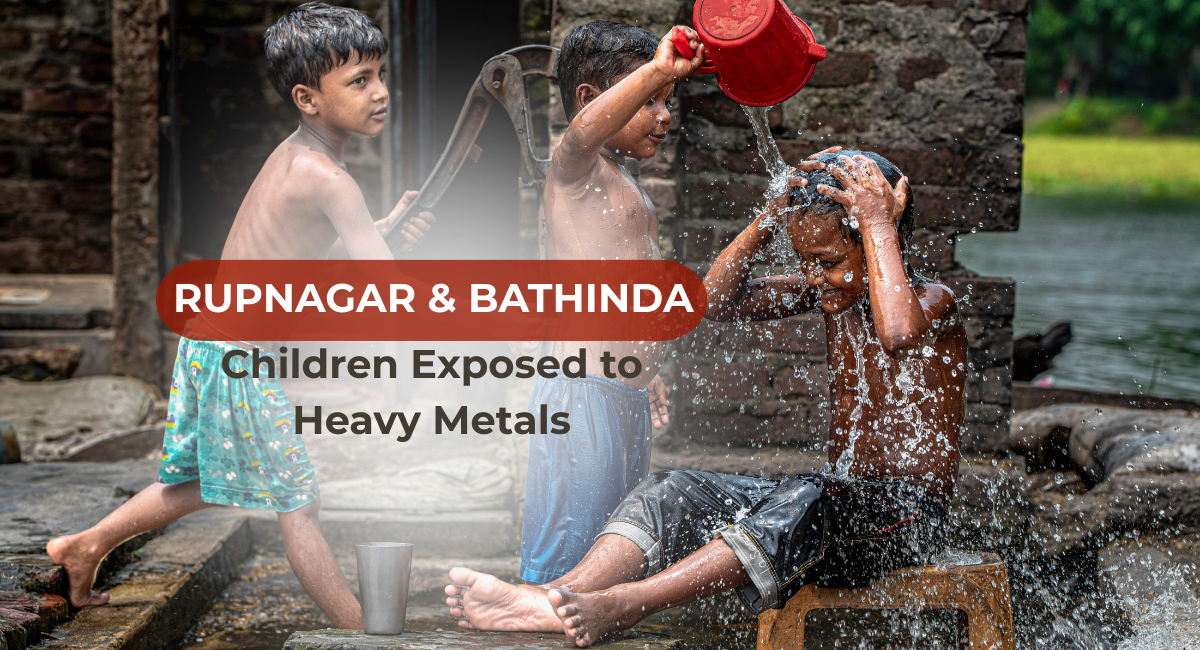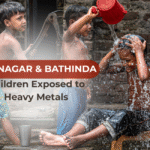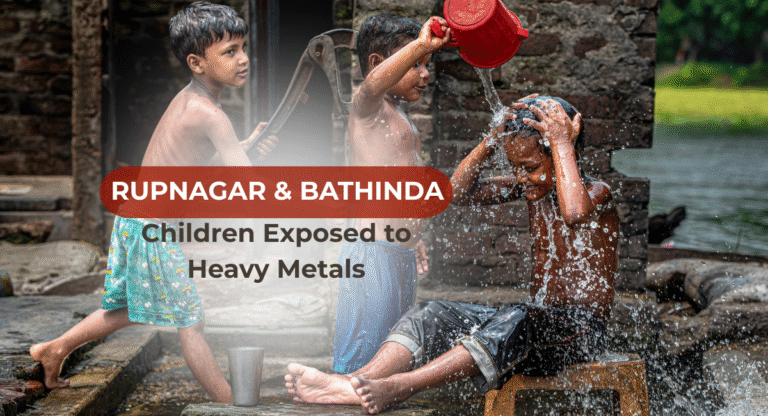
A new study has raised alarm in Rupnagar and Bathinda after detecting unusually high levels of lead in children’s blood and uranium in their local groundwater. The research, conducted by Panjab University’s Geo-Environmental Research Laboratory in partnership with Baba Farid NGO, found that a worrying fraction of the children showed contamination beyond safe limits. This situation is becoming a public health issue, calling for quick responses from both state and local authorities.
How the Study Was Done
- The researchers collected 149 blood samples and 137 hair samples from children aged 5–15 in Rupnagar, Bathinda, and Chandigarh.
- They also tested 37 groundwater samples from the same regions.
- The aim was to check for lead and uranium levels, comparing them against international safety standards.
Key Findings from Rupnagar and Bathinda
Lead in Children’s Blood & Hair
- Around 19.35% of blood samples from children in Rupnagar exceeded safe lead levels.
- In Bathinda, this figure was even higher—32.62% of children’s blood samples crossed safety thresholds.
- Hair tests, which reflect longer-term exposure, also showed about 39% of samples were over safe limits in all areas.
Uranium in Groundwater
- All groundwater samples in Bathinda had uranium levels above World Health Organization and Bureau of Indian Standards limits.
- In Rupnagar, one of 13 samples also exceeded safe uranium levels.
Health Risks in Rupnagar and Bathinda

- Lead exposure in children is linked with developmental delays, learning difficulties, and other neurological issues.
- Uranium contamination may affect kidneys and other internal organs over long exposure.
- Young children are especially vulnerable—small quantities can have serious effects on growth and health.
What Authorities Are Being Asked to Do
- The Punjab and UT Chandigarh Human Rights Commissions have called it a serious public health and human rights issue.
- Hospitals are urged to set up toxicology departments and ensure availability of chelation therapy (medicines for treating heavy metal poisoning).
- They also demand inspections of industries, power plants, and waste disposal systems to manage sources of contamination.
- Installation and verification of RO water purification systems in schools and communities are being ordered.
Challenges & What Needs to Be Done
- Many areas do not have regular monitoring of groundwater or children’s health.
- Some industrial units may be releasing pollutants that leach into water sources.
- Public awareness is low; many people might be unaware that their water is contaminated.
- Coordination across health, environment, water, and industry departments is essential for effective implementation.
Conclusion
The findings from Rupnagar and Bathinda serve as a stark warning that heavy metals like lead and uranium are not just environmental issues—they directly threaten children’s health. Action plans focusing on testing, remediation, industry checks, and medical care must be implemented without delay to safeguard future generations.

















